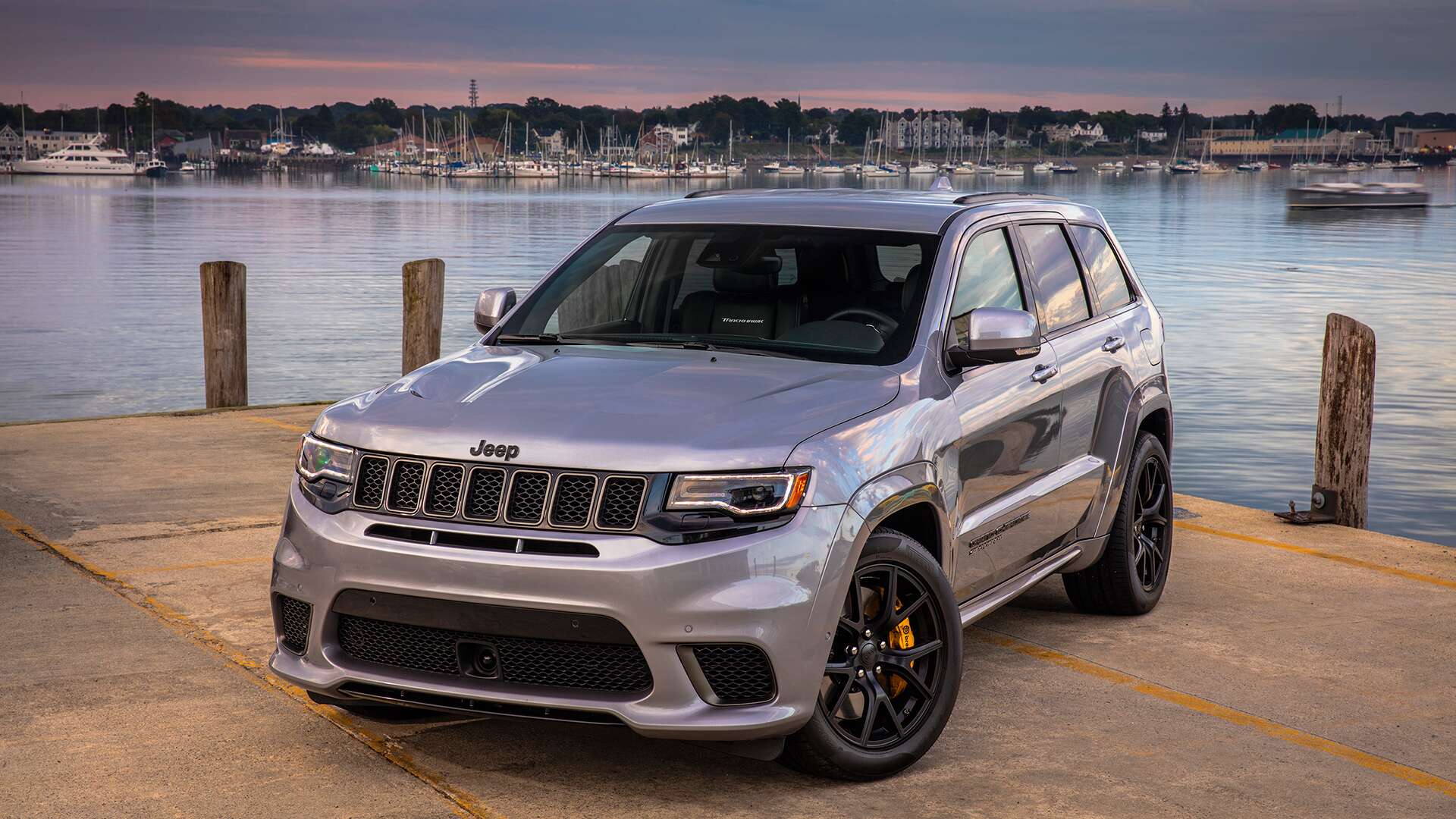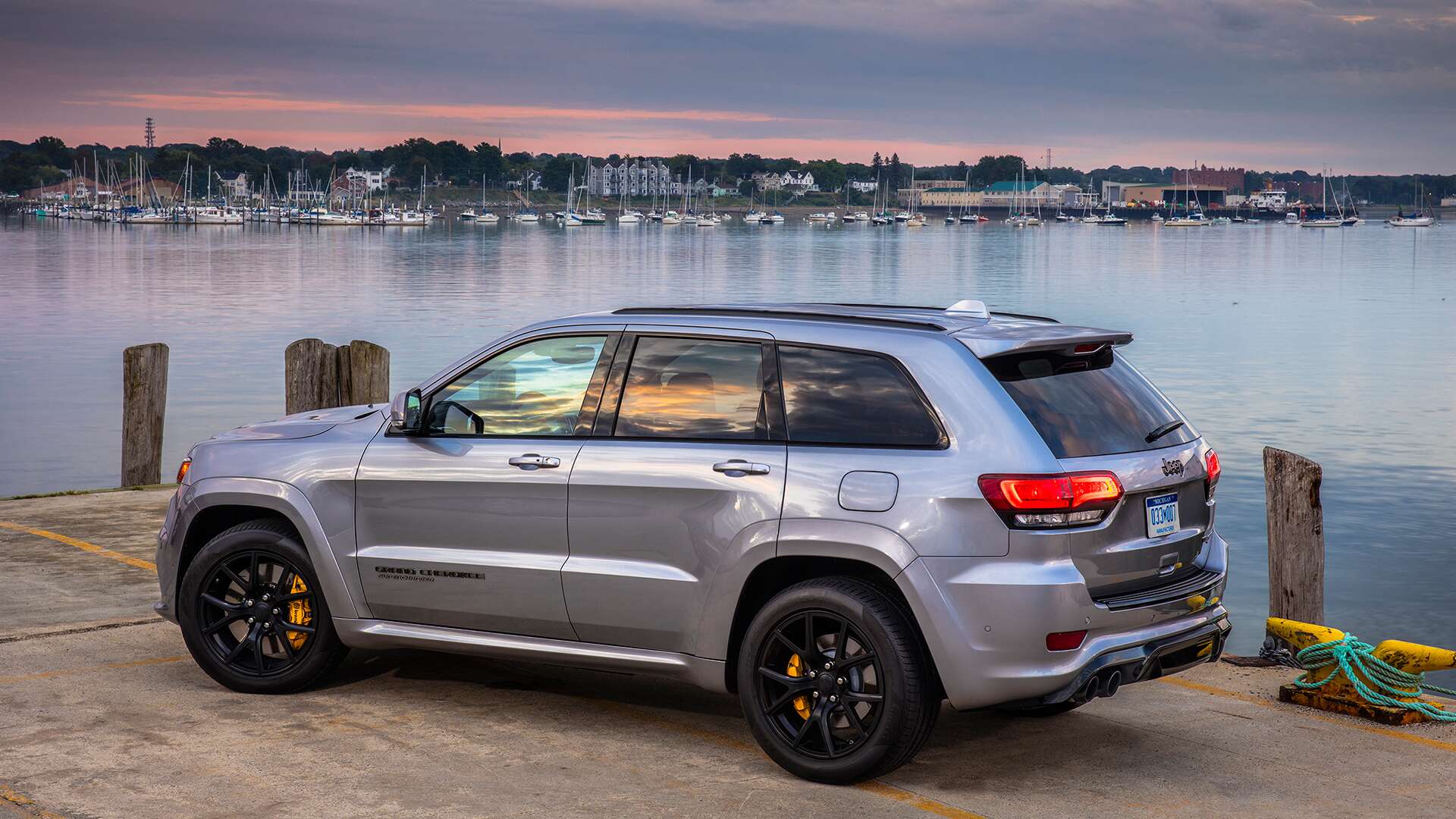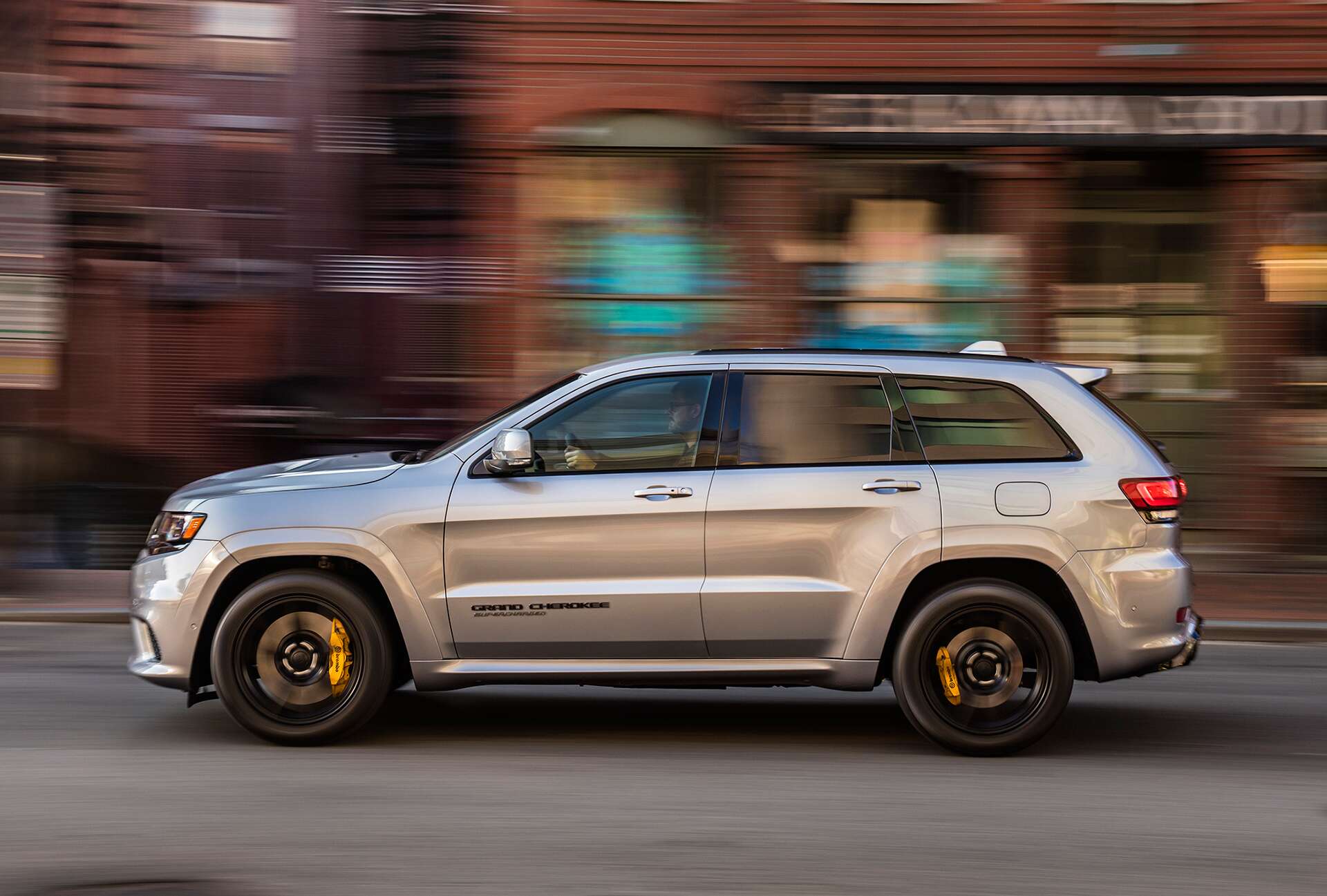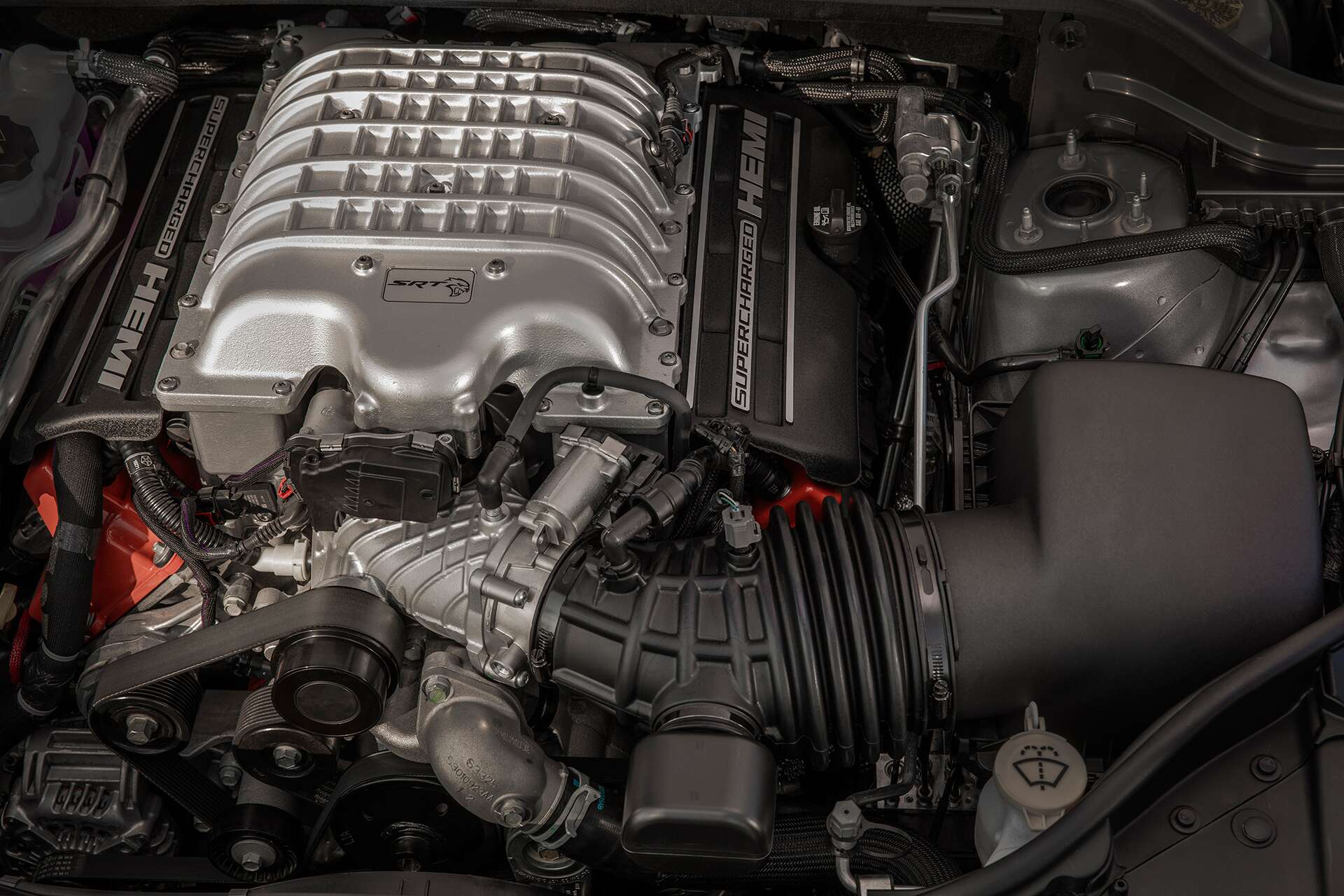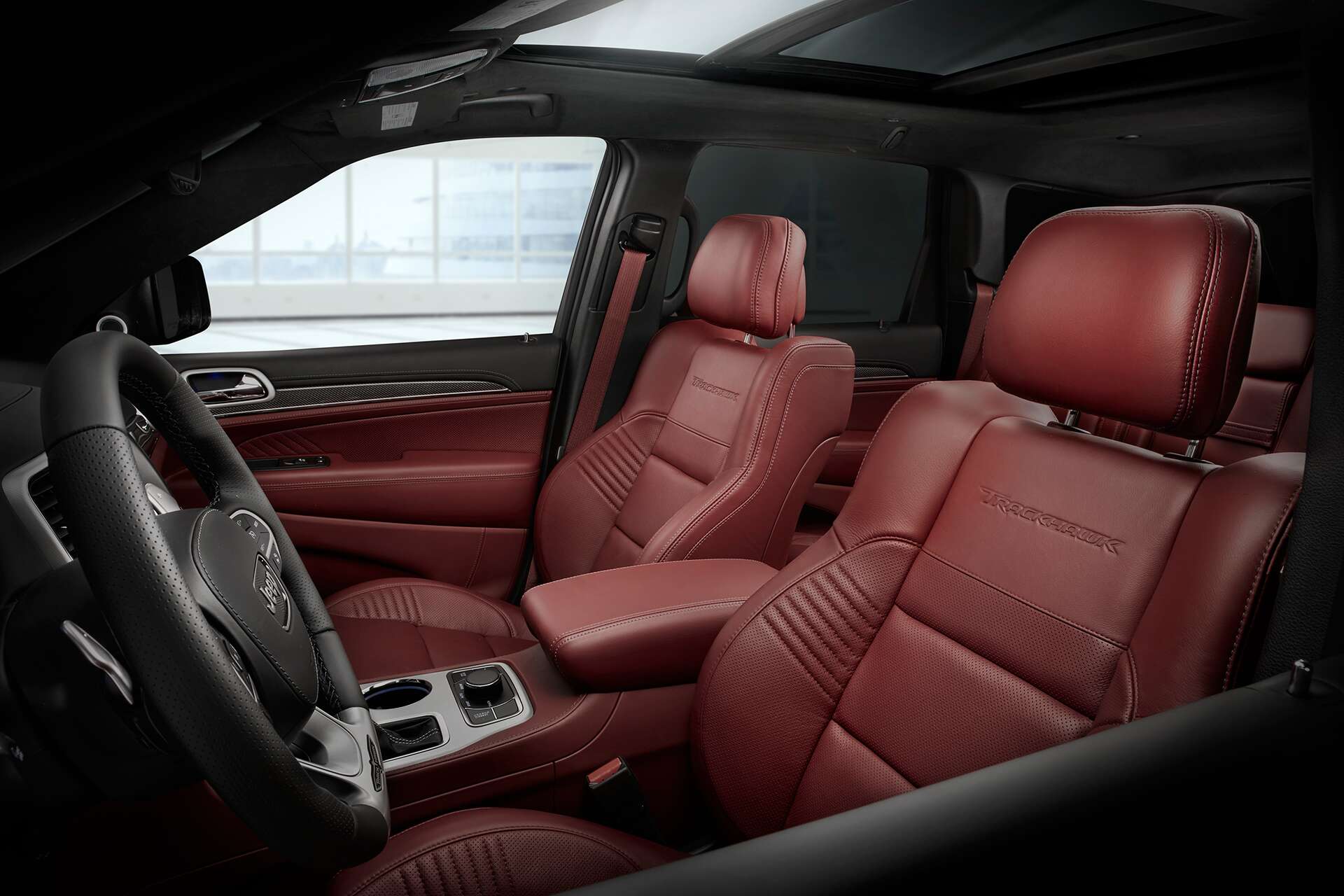I finally did it: I’m a dad. The funny thing is, I’ve always owned dad cars, even before I needed to. Owning anything with less than four doors never made much sense, which is how I ended up with a stable of souped-up grandpa cars from the Sixties and Seventies. Now that I’m a father, the ’74 Oldsmobile sedan I brought my wife and son home from the hospital in seems a bit dated. And that, my friends, is how I found myself on this quest to find the perfect new dad car. he most recent contestant: The Hellcat-powered 2018 Jeep Grand Cherokee Trackhawk.
The 2018 Jeep Grand Cherokee Trackhawk, By the Numbers
- Base Price (Price as Tested): $86,200 ($92,125)
- Powertrain: supercharged 6.2-liter V-8, 707 horsepower, 645 pound-feet torque; eight-speed automatic transmission; all-wheel drive
- EPA Fuel Economy: 11 mpg city / 17 mpg highway
- 0-60 MPH: 3.5 seconds (Car and Driver testing)
- Quarter Mile: 12.0 seconds at 115 mph (C/D testing)
- Random fact: The Jeep Grand Cherokee Trackhawk is the fastest internal combustion engine SUV on the market (the Tesla Model X will hit 60 mph in 2.9 seconds). The next fastest model? The $200,000+ Lamborghini Urus.
The Jeep Grand Cherokee Trackhawk is patently absurd. Never has there been a better (or worse) excuse for someone to buy a “family car” that can also dominate at the drag strip. But Fiat Chrysler Automobiles undoubtedly knew that when it stuffed a 707-horsepower supercharged Hellcat engine in an SUV that is otherwise best suited for trips to the grocery store.
You have to be careful with the Hellcat version of the Grand Cherokee, though. Even if you try to drive carefully on your appointed daily rounds, the supercharger whine is always whispering, sotto voce, “Hey. Pssst. You. Yeah, you. C’mon, show these other idiots who’s boss.” That kind of power gives you the ability to turn every stoplight into a drag strip—and, with few exceptions, crush whomever you’re racing. Once your mind knows it has that kind of power at its disposal, the neural pathways between good sense and your right foot seem to become obscured.
The Trackhawk’s supercharged engine cranks out 645 pound-feet of torque at 4,800 rpm, giving this particular SUV the ability to rocket from zero to 60 mph in a searing 3.5 seconds on its way to a go-straight-to-jail-worthy top speed of 180 mph. With that sort of muscle on tap, whatever groceries you ended up loading into it would look like they’d been through a blender if you drove it to the limit everywhere you went. Launch mode gives you the ability to rev up the engine to the optimal rpm before releasing the brake to launch the truck. When I took off from a dead stop, it felt like thin fingers were reaching out from somewhere and pulling the sides of my eyeballs back toward my ears. And that roar! Despite the hellish moniker slapped upon its engine, the noises this Jeep makes are divine.
If you can restrain yourself and ignore the seductive forced induction whine, the Trackhawk is actually somewhat practical. (More than its fellow Hellcat-powered Charger and Challenger relatives, at any rate.) Regardless of the fire-breathing powerplant, it’s still a good-sized SUV, with a generous 36 cubic feet of cargo space behind the rear seats and more than 68 cubic feet with the seats folded down. Stroller, suitcases, day packs, and bags full of snacks all fit behind the rear seats with ease. Fastening the child safety seat into the supplied LATCH anchors was a snap. A couple of clicks and junior and I were off, carrying a weekend’s worth of luggage with plenty of room left for three other passengers—and still more cargo. And that’s not even to mention that this Grand Cherokee can tow 7,200 pounds.
I’ve driven the Hellcat Challenger and the Scat Pack Charger. Both are great cars, but they have a real-world limitation: crummy visibility. With its higher seating position, the Trackhawk offers a better view ahead through traffic—perfect for slicing through obstinate knots of slow-moving vehicles. Of course, most of the credit for that capability goes to the gobs and gobs of better-than-everyone-else power that make lightning-fast movement possible.
Where the height hurts this vehicle is at higher speeds. Despite the gain in forward visibility, there’s something nerve-wracking about driving fast in an elevated position. The Jeep may have been designed for it, but it still felt something like denying the laws of physics—not something the part of my brain concerned with self-preservation likes. But since no one ought to be driving 180 mph on public roads, the Jeep Trackhawk is more than stable enough for just about anything that’ll be thrown at it. It allows the speed-hungry dad to have his cake and eat it too, with plenty of family-friendly features…along with face-melting acceleration.
Still, the underlying absurdity of the Trackhawk can’t be denied. It snapped back into focus when I noticed the blue glow of the “Eco” button low on the dash, just below the HVAC controls. It appeared to have been placed there without irony, but it was indeed ironic. Regardless of whether or not the button is pressed, this particular Jeep gets horrible fuel economy. The EPA rating is one thing, but let’s be honest: Anyone who buys a Trackhawk isn’t doing so to drive it gently. I saw 10 mpg during my travels. Again, it was the siren song of the exhaust roar that got me. Like a favorite tune, it never gets old.
All in all, the Trackhawk tries to do too much. It’s probably best to get something boring and safe for family use, with a screaming speed machine on the side dedicated to drag strip runs. Having both in one package seems like a recipe for disaster.
The price, too, seems like it could be an issue. I can’t imagine Jeep will sell too many of these; most people on the market for a $90,000 SUV will likely be looking at muscle trucks of German manufacture. Here in Long Island—the land of cheap Infiniti sedan lease deals and correspondingly truculent driving manners—the Trackhawk garnered more than its share of admiration from passersby, but I doubt many of those guys could come up with the scratch for a $1,300/month lease payment. Those who can might also want to move someplace with good public transit options. If you find the Hellcat roar too irresistible, the state may think better of granting you driving privileges.
Source: Read Full Article

